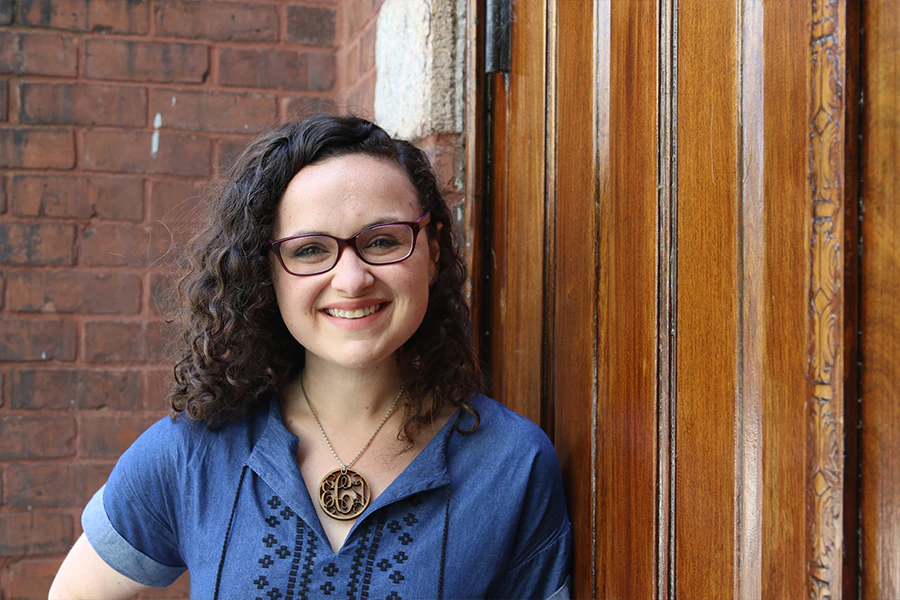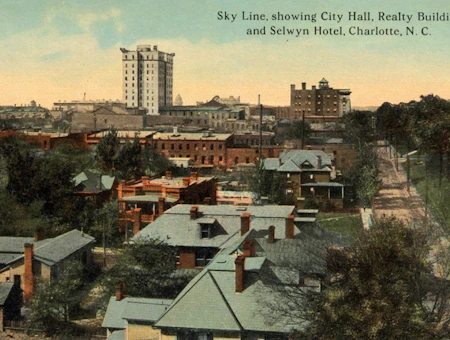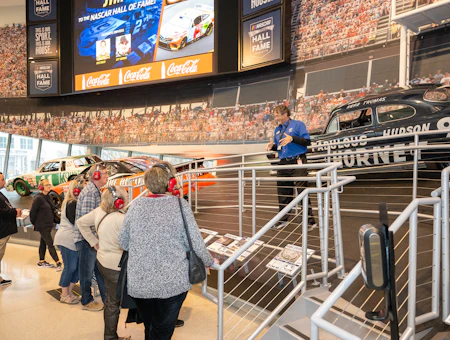Get to Know Charlotte: The Queen City
Even today, Charlotte’s storied past shapes locals’ day-to-day lives. To help you understand the Queen City—and why it’s called the Queen City—we’re answering some of visitors’ frequently asked questions about the city.
by Beth Castle

Why is it called the Queen City?
Charlotte was founded by European settlers in 1768, when King George III still ruled the Colonies. They named the new hamlet after the King’s wife, Queen Charlotte, and gave the surrounding county the name Mecklenburg in honor of her majesty’s birthplace in Germany. Today, find statues of the queen on North College Street and in front of Charlotte Douglas International Airport.
Experience it: Follow Uptown’s Charlotte Liberty Walk, a series of bronze plaques and monuments that detail the city’s vital importance during the American Revolution, or the Trail of History on the Little Sugar Creek Greenway, which highlights the key people who’ve contributed to the area’s growth.
Why is it called Uptown not Downtown?
Charlotte’s main street, Tryon, predates the city’s Colonial roots. The street follows the Nations Path—the great trading route of the Catawba and other Native American tribes—and runs along a low ridgeline with a diagonal slant. As such, if you walk toward Independence Square at the heart of Center City, no matter which way you approach it, you’ll be moving gently upward. In recent years, there was a formal declaration proclaiming Uptown the official name of the district.
Experience it: Learn more about Charlotte’s beginnings at The Charlotte Museum of History or the Levine Museum of the New South.

Why are there references to bees everywhere?
They’re hornets, and they’re the mascot of the Charlotte Hornets, the city’s NBA team. Beyond that, they’re also a symbol of the city’s unconquerable spirit. When British General Cornwallis came through the area during the Revolutionary War, he encountered more than he bargained for and dubbed the area “a hornets’ nest of rebellion.” The nickname stuck, and that’s why you’ll see hornet’s nest symbols all over town, including on police officers’ uniforms.
Experience it: Cheer on the NBA Hornets during the season or experience a concert at their “Hive,” Spectrum Center.
Why do people keep talking about banking?
Strict laws limited banks to one state until Charlotte began working toward a new vision. In 1982, mogul Hugh McColl led a team from Charlotte’s North Carolina National Bank, who found a way to legally buy a bank in Lake City, Florida. That opened the door. In 1985, he helped craft the Interstate Banking Compact, which allowed banks in the Southeast to expand across state lines. By 1998, McColl sat at the helm of Bank of America, the nation’s first coast-to-coast bank. Today, it’s the largest U.S. bank, and it’s still headquartered in Charlotte. And with major banking players like Wells Fargo and Fifth Third Bank in town, Charlotte is the third largest financial center in the country, behind New York and San Francisco.
Experience it: Discover Charlotte’s rich roots at Reed Gold Mine and Wells Fargo History Museum and collect your artistic earnings at the Mint Museum Randolph, which is housed in Charlotte’s original branch of the U.S. Mint.

Who is Captain Jack?
In May 1775, more than a year before Patriot leaders signed the Declaration of Independence, Charlotte made its own statement of defiance against Britain. The Mecklenburg Resolves of May 31, 1775, declared the “authority of the King or Parliament” to be “null and void.” Tradition holds that there was even a full-blown Mecklenburg Declaration of Independence created on May 20, 1775. Although no evidence of those papers exists, it’s said that in June 1775, a local tavern-keeper named James Jack carried them to the Continental Congress in Philadelphia, Pennsylvania. Locals and visitors can admire a statue of brave Captain Jack on horseback galloping along Little Sugar Creek Greenway, just east of Uptown. And he’s been known to make an appearance during Meck Deck Day festivities, held May 20 every year.
Experience it: Rent a scooter or Charlotte B-Cycle, ride down the Little Sugar Creek Greenway and snap a photo with the larger-than-life Captain James Jack statue.










